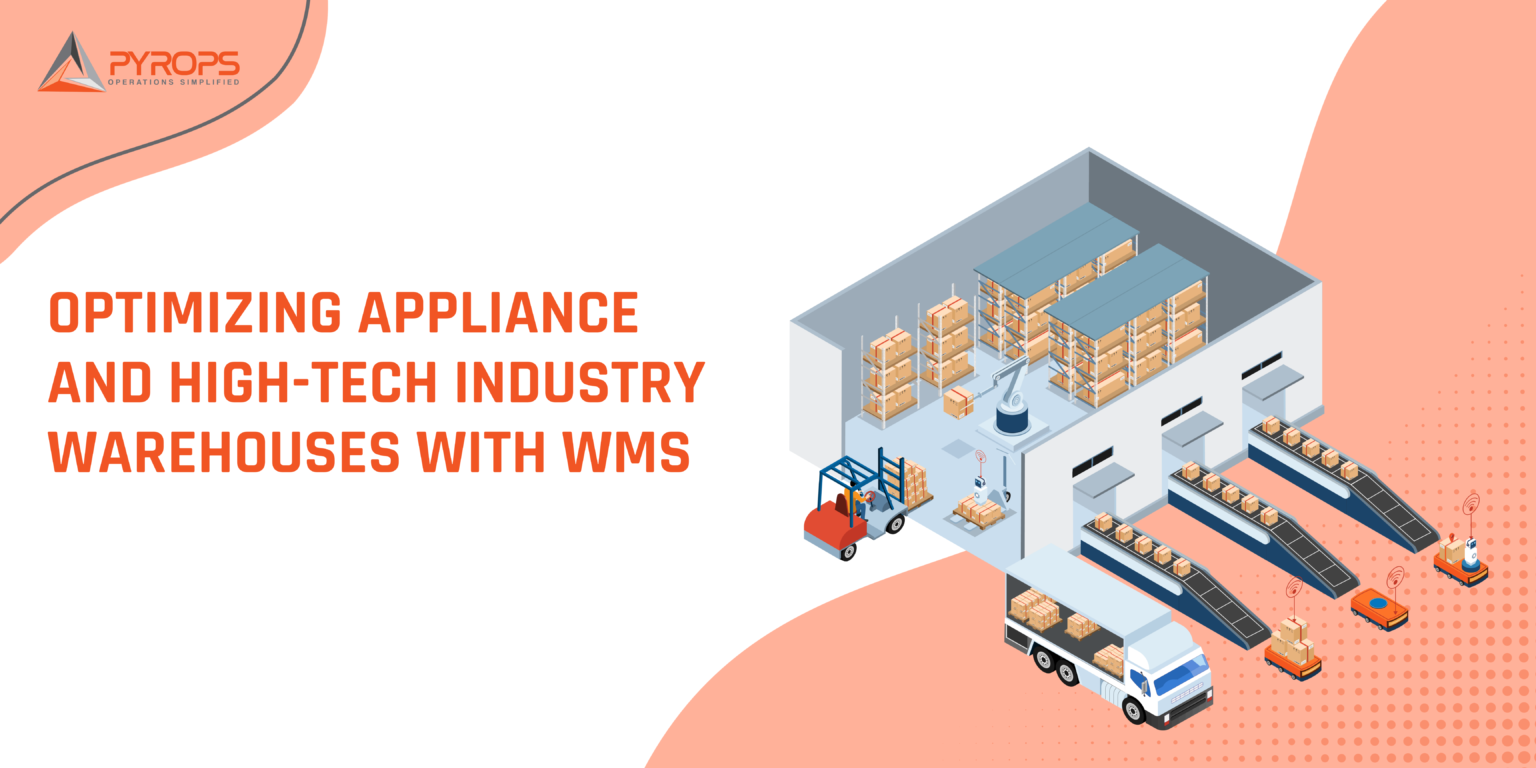The appliance and high-tech industry is characterized by its fast-paced nature and constant technological advancements. In such an environment, efficient warehouse management is crucial to meet consumer demands, ensure product quality, and streamline operations. Implementing a Warehouse Management System (WMS) has proven to be a game-changer for businesses in this sector.
This article explores how WMS implementations benefit appliance and high-tech industry warehouses and the limitations of traditional ERP systems that WMS helps overcome.
WMS in Appliance and High-Tech Warehouses
Inventory Precision and Real-time Tracking:
WMS offers unparalleled inventory accuracy. In a sector where products are diverse and costly, knowing exactly what you have in stock at any given moment is crucial. WMS provides real-time visibility into inventory levels, reducing the risk of overstocking or stockouts.
Optimal Space Utilization:
Appliances and high-tech products often come in various shapes and sizes. WMS uses intelligent algorithms to optimize storage space, ensuring that every inch of the warehouse is utilized efficiently. It also provides recommendations for proper bin locations, reducing travel time and labor costs.
Advanced Order Processing:
WMS streamlines order fulfillment with features like wave picking and intelligent picking routes. This not only accelerates order processing but also minimizes errors, ensuring the right products reach customers on time.
Serialization and Batch Tracking:
High-tech products often require serialization or batch tracking for traceability and compliance. WMS allows for precise tracking of each item throughout its lifecycle, enhancing product quality control and facilitating recalls if necessary.
Improved Quality Control:
WMS supports quality control processes with customizable inspection checklists and workflows. This ensures that products leaving the warehouse meet the highest quality standards, reducing returns and enhancing customer satisfaction.
Advanced Operational Features
2-Step Putaway with Different MHEs: This feature enables 2-step putaway processes requiring different MHEs. A BOPT operator delivers the pallet to the PND area (Pick and Drop). Another operator picks up the pallet from the PND area and places it in the Pallet Storage area using Stackers based on system-guided putaway tasks
Continuous Availability in Pick Faces: WMS monitors pick faces and automatically triggers replenishments when inventory levels are low. This ensures that pickers always have access to the items they need, reducing downtime and improving productivity. Instead of pickers having to travel to distant storage locations, WMS optimizes replenishments to minimize travel time, leading to faster order fulfillment.
Optimizing Picking Based on Demand: WMS helps determine the most efficient picking strategy. It can decide whether to pick directly from pallets or to replenish pick faces first, optimizing order fulfillment based on actual demand. This approach minimizes unnecessary handling of products, reducing the risk of damage and improving overall picking efficiency
Dynamic Zone and Location Management: Seasonal SKU Handling: WMS can dynamically allocate storage zones based on seasonal SKU variations. For example, it can allocate more space to accommodate holiday-related products during peak seasons and adjust storage accordingly during off-peak times.
Demand-Pattern-Based Location Allocation: WMS analyzes demand patterns and assigns products to storage locations accordingly. Fast-moving items can be placed in easily accessible areas, while slower-moving items are allocated to more distant storage locations, optimizing efficiency.
Limitations of ERP Systems in Warehousing
While ERPs play a vital role in enterprise resource planning, they fall short when it comes to the complexities of modern warehousing. By overcoming these limitations, WMS implementations have become a strategic investment for appliance and high-tech companies, enabling them to stay ahead of the curve, satisfy customer demands, and thrive in a rapidly evolving market.
Limited Warehouse Visibility: Traditional ERP systems lack real-time visibility into warehouse operations. This leads to inaccurate inventory data, making it challenging to make informed decisions.
Inefficient Space Utilization: ERPs are not designed for optimizing warehouse space. They may not provide recommendations on how to arrange products for maximum space utilization, resulting in inefficient storage.
Manual and Error-prone Processes: ERP systems often require manual data entry and paper-based processes. This increases the likelihood of errors, which can have costly consequences in the high-tech industry.
Inadequate Order Processing: ERPs may not offer advanced order processing capabilities like wave picking and automated order consolidation, leading to slower order fulfillment and increased labor costs.
Limited Support for Serial and Batch Tracking: Many ERP systems lack robust features for serial and batch tracking, which are critical in high-tech industries to ensure product traceability and regulatory compliance.
Conclusion
In the highly competitive appliance and high-tech industry, optimizing warehouse operations is not optional; it’s a necessity. Warehouse Management Systems (WMS) empower businesses in this sector by providing real-time inventory visibility, optimizing space utilization, streamlining order processing, and ensuring compliance with serialization and quality control standards.
Read more: How is dark store fulfillment different from regular E-commerce fulfillment







